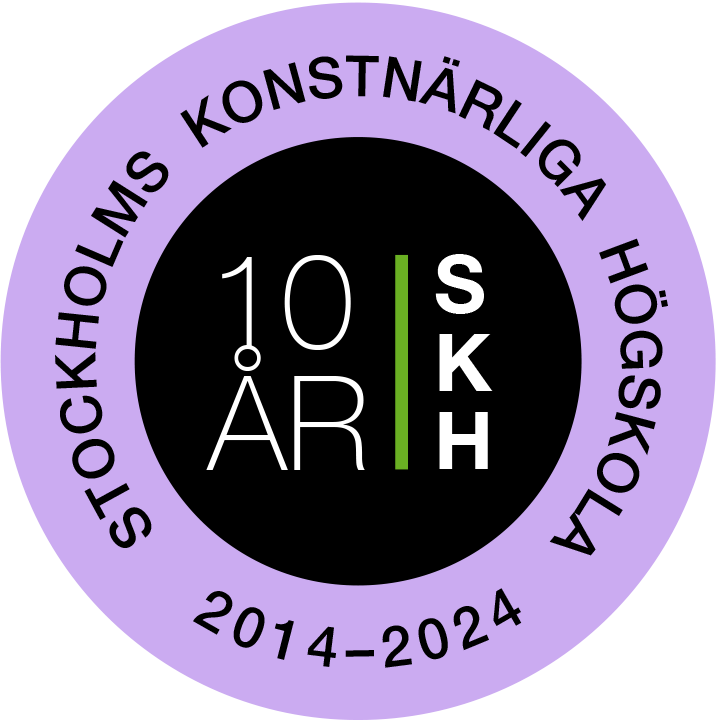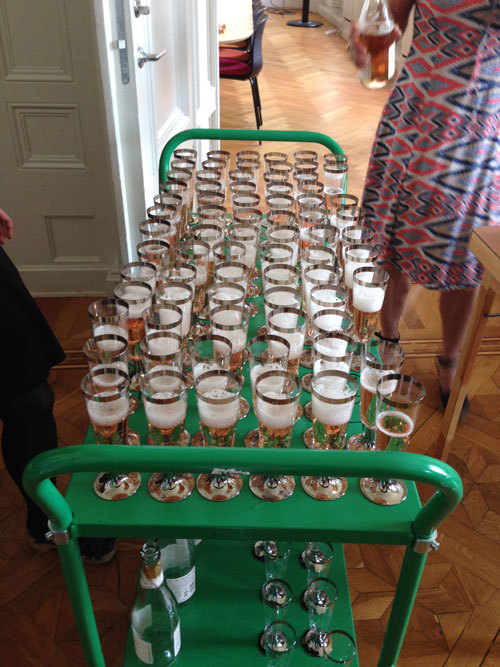How SKH got to award doctorates
In 2008, the Swedish government introduced a new form of degree, that of Doctor of Fine Arts. A number of educational institutions with long standing PhD studies in the borderlands between art and science, such as Gothenburg and Lund Universities and the Swedish School of Textiles in Borås, were quickly given the right to award this new form of degree.
But the aim was not just to get traditional higher education institutions on board with the new degree form, but also the artistic research carried out at independent arts academies. And there it did not go as well. SKH's predecessor, the School of Dance and Circus, and the much larger Konstfack applied for degree-awarding powers in 2010, and were both rejected. After that, it was pretty quiet.
One way forward came through an initiative by the arts academies in Stockholm to bring together research in a joint research hub, to which the independent institutions would be affiliated. The Ministry of Education, with Parliamentary Under-Secretary Peter Honeth as negotiator, wanted instead to merge the arts academies in Stockholm, something that a number of governments had tried and failed to do over the years.
Now, three of the six arts academies agreed to merge to form Stockholm University of the Arts, which cleared the way for the government's research investment. Where the three institutions together had had research funding of around SEK 20 million before the merger, the new organisation would receive an additional SEK 40 million, with even more promised for the future. When SKH was formed, the money came, but so did the pressure to justify it – not least by establishing a programme of doctoral studies.
“It was a bit of a make-or-break situation,” says Cecilia Roos, vice-rector for research 2016–2024. “The whole purpose of merging was to get degree-awarding powers for doctoral studies. It would have been disastrous for the whole idea of the merger if we had not obtained that!”
Upside-down application
The fact that the increased research funding came first, and the degree-awarding powers later, was the opposite of what usually happens when a higher education institution wants to establish a doctoral studies programme, says Jenny Tyllström, Director of the Research Office 2014–2021. And the fact that it was now urgent – the goal was to have the application ready by 2016 – also turned other parts of the process on its head.
“Normally, you gradually allocate more and more existing resources and build up a research environment that meets the Swedish Higher Education Authority's requirements for third-cycle studies before you apply,” says Jenny Tyllström. “You recruit staff with the skills to supervise PhD students and conduct research in the chosen subject area. You also make sure that there are support structures in the form of premises, equipment and other things that professors and research staff need in their research. Then you apply for and receive funding.”
“There was a lot of time pressure,” says Camilla Damkjaer, who was in charge of the third-cycle studies programme. “It was a race against the clock to get the application in as soon as possible. At the same time, the three higher education institutions that were part of the new university, all of which had different ways of relating to research, had to be brought together.”
“Getting the themes in place and creating a stable programme in a field that was very much in flux was a big challenge,” says Camilla Damkjaer. “There was no common understanding of what research was in the field, and there were no direct models, no straightforward examples to lean on.”
Context and coherence
This type of application was also new to the Swedish Higher Education Authority. However, in 2013 they had decided to treat applications for a Degree of Doctor in Fine Arts in the same way as the traditional scientific doctorate.
“The scientific and artistic degrees were included in the same guidance,” says Nils Olsson, senior investigator at the Swedish Higher Education Authority. “The guidance was generally designed and could therefore be adapted to the different degrees.”
“We had to provide a coherent description of what our third-cycle studies looked like,” says Camilla Damkjaer. “All the management procedures, programme syllabuses, course syllabuses, show that we had all the content and processes in place.”
“The big question was how to formulate the subject and the areas, in a way that was neither too broad nor too narrow,” says Camilla. “The challenge was that it had to cover everything, but should also potentially include art forms that did not yet exist at SKH.”
Another part of the work was to collect CVs from all teachers to show that they had enough expertise. In the end, a huge amount of material was submitted.
“There were so many pages! The appendices alone were over 600 pages,” says SKH Director of Communications Monica Engdahl. “It was an enormous amount of work just to get all the material together and make it look presentable, we worked on it late into the night. We had to keep a close eye on when the alarm would go off and ran down the wide staircase on Linnégatan with five minutes to spare to get out.”
Relief and joy
In October 2015, the application was finally submitted. Then it was a matter of waiting for the external experts to conduct interviews with the employees, for which preparations were naturally made, and supplements had to be submitted, but it was also a long, tense wait.
Finally, in June 2016, the Swedish Higher Education Authority issued a favourable decision. The mood was enthusiastic and proud, and the vice-chancellor had bought cakes. Many describe the announcement of the degree-awarding powers as the most important single thing they experienced during SKH's existence. Anna Karin Ståhle, who has been at SKH and its predecessor for more than 50 years, calls it the most memorable moment in her professional life.
“When I came in, people had already got the news and were celebrating, and I actually started crying,” says Anna Karin. “All the memories from my time at the school flashed by, the smell of the old premises at the Choreographic Institute on Blasieholmen, my locker with my old worn-out can-can shoes, all the people and environments I had encountered. That it had gone all the way from there to what we had achieved that day.”
And the process itself still greatly influences how SKH works, and how people think about what artistic research can be. And not least, it has instilled self-confidence.
“It was very exciting to be part of a field that was built almost from scratch, to see it take shape and slowly find its foundations,” says Camilla Damkjaer. “To be part of such a milestone. How it has enriched our environment. I learned to what extent a field is really such a social ecology, that it is the sum of human thought, behaviour and action. The field is built on us, we are the ones who influence it based on the choices we make.”
SKH is turning ten

SKH is celebrating ten years as a university college in 2024, and we'll be filling the year with retrospection, foresight, articles and events that connect to the decennial in various ways.
Application for third cycle degrees
.jpg)
In June 2016 the decision was celebrated with both cake and sparkling wine. Photo: SKH
